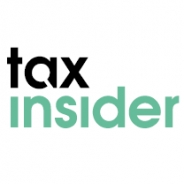
Working from home is increasingly popular, but could it affect your Capital Gains Tax (CGT) Private Residence Relief when you come to sell?
Introduction
Private Residence Relief is perhaps one of the best well-known tax reliefs, allowing a person to sell his or her (main) home without triggering a liability to CGT. As with most reliefs, its availability is contingent on certain conditions being met.
Main Residence
The relief applies to the disposal of a person’s 'principal' (main) residence. As the MPs’ expenses scandal highlighted, where a person has more than one residence, he or she can choose which one is the main residence for the purposes of the relief. This does not have to be the one in which most time is spent and a person can chop and change which property is regarded as his or her main residence, although generally only one property can be the `main’ residence at any one time.
Relief is provided from CGT on the disposal of all or part of a property that is, or has at any time in the taxpayer’s ownership, been his or her only or main residence, together with land enjoyed with the property as a garden up to a permitted area.
No Relief for Exclusive Business Use
Private Residence Relief is not available in respect of any part of the property that is used exclusively for business use. The key word here is exclusively and relief is only denied in respect of that part of the property that is used exclusively for business use. Where there is exclusive business use, any gain arising on the sale of the property must be apportioned and the proportion relating to exclusive business use is charged to tax.
Example
Julia runs a marketing business from home. Her home has eight rooms and she uses one exclusively as an office. On the sale of her property, she realises a gain of £50,000. One eighth (£6,250) would be charged to CGT. To the extent that her Annual Exemption (£10,100 for 2010/11) remains available, this would shelter the gain with the result that no CGT is payable.
The same considerations apply if a person is employed but works from home and sets aside a dedicated area exclusively for work.
Protecting the Exemption
As noted above, relief is only lost where there is exclusive business use of part of the property. To protect the exemption, all that is necessary is to ensure that any part of the home that is used for business purposes is also available for private use. For example, a room used as an office from which to run the business during the day, could also be used by the taxpayer’s children to do their homework in the evening.
By ensuring that rooms used for business are also available for domestic use, it is possible both to work from home while ensuring that Private Residence Relief remains available for the whole property.
Income Tax Dilemma
While non-exclusive business use is a `good thing’ from the perspective of protecting full entitlement to Private Residence Relief, the same cannot be said from an Income Tax angle. Relief for Income Tax expenses is available to the extent that they are incurred wholly and exclusively in relation to that business.
Where a room is used exclusively for business, a greater deduction is permitted. Where there is non-exclusive use, the permitted deduction is reduced as costs must be apportioned between business and non-business use.
Practical Tip
If part of the property is used exclusively for business, all is not lost from a CGT perspective. Depending on the amount of any gain arising in relation to the business part, it may be possible to shelter the gain with the Annual CGT Exemption (£10,100 for 2010/11) with the result that it is possible both to use part of one’s house exclusively for business and to sell the house without paying any CGT, while enjoying the maximum possible deduction for expenses in the process.



Please register or log in to add comments.
There are not comments added